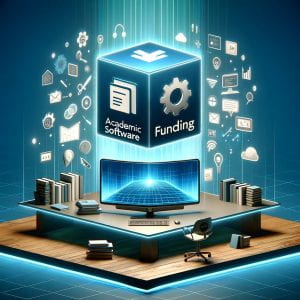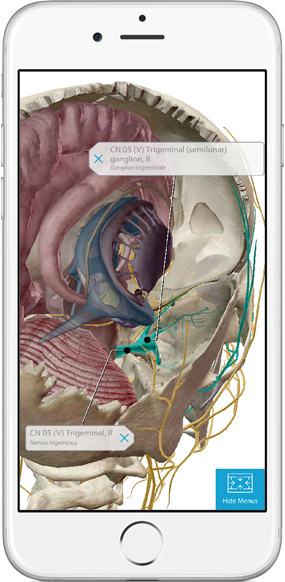 The Teaching, Learning, and Technology Roundtable (TLTR) is delighted to offer funding for academic software licenses, including popular tools like ChatGPT Plus, for faculty keen on enhancing their teaching and research. We invite you to apply via the TLTR Academic Software Request Form. Our process is straightforward: secure your software, share your insights through a brief report, and potentially transform your academic practice. Funding is allocated on a first-come, first-served basis, tailored for lower-cost applications with monthly or annual licensing feeds to ensure broad accessibility. Requests will be vetted by Instructional Technology staff. For larger projects, please consult our Guidelines page. Seize this opportunity to integrate cutting-edge technology into your work, supported by the Instructional Technology team.
The Teaching, Learning, and Technology Roundtable (TLTR) is delighted to offer funding for academic software licenses, including popular tools like ChatGPT Plus, for faculty keen on enhancing their teaching and research. We invite you to apply via the TLTR Academic Software Request Form. Our process is straightforward: secure your software, share your insights through a brief report, and potentially transform your academic practice. Funding is allocated on a first-come, first-served basis, tailored for lower-cost applications with monthly or annual licensing feeds to ensure broad accessibility. Requests will be vetted by Instructional Technology staff. For larger projects, please consult our Guidelines page. Seize this opportunity to integrate cutting-edge technology into your work, supported by the Instructional Technology team.
Category Archives: News
TLTR Meeting: AI & Academic Integrity, Wednesday, May 10, 2 – 3 pm
This will be the final TLTR meeting of the year where we will discuss the impact of Generative Artificial Intelligence (AI), aka ChatGPT, on teaching and learning. We will meet on Zoom. We will also invite members of the Academic Integrity Committee. Please invite anyone else you think would want to be part of this conversation. Our topics will include:
- Recommendations for Course Policy Models
- Model Assignments
- Advice for further work (research, guidance for the university community, etc.) in this area
Notes from this meeting are available in this Google Doc: TLTR Meeting: AI & Academic Integrity, 5/10/23
Note are only open to members of the St. Edward’s community; you must be logged into your St. Edward’s Google Account.
CFP for 2022-2023 TLTR Pilots
The Teaching, Learning, and Technology Roundtable (TLTR) invites proposals for the Technology for Innovative Learning & Teaching Pilot Project Grants (aka TLTR Pilot Project Grants) for projects anytime in 2022 (Spring, Summer, Fall) or Spring 2023. The Office of Information Technology (OIT) sets aside $20,000 on an annual basis to fund innovative teaching projects that incorporate new technologies and can be used as a model for other faculty, and the TLTR uses this fund to award grants up to $5,000. The TLTR especially encourages projects that support digital transformation at the university and the development of digital skills by students, faculty, and staff. We also encourage projects that align with our strategic plan or the areas of focus of the innovation fellowship:
- Experiential and/or Austin-based pedagogy
- Inclusive and Antiracist Teaching (includes Open Educational Resources and Universal Design for Learning/Accessibility)
- Online Course Design or Revision
Due Dates:
- Statement of Interest Due: 2022 deadline extended to March 25
- Final Application Due: 2022 deadline extended to April 8
See the full guidelines for details and application link: Guidelines
New TLTR members and Interim Co-Chair
Welcome to these new TLTR Members for the 2021-2022 Academic year:
- Bilal Shebaro, Natural Sciences
- Curt Yowell, Arts and Humanities
- Jonathan Hodge, Dean, Natural Sciences, Council of Deans
- Jason Arellano, Information Technology Resources
In addition, since our faculty co-chair, Steven Fletcher is on sabbatical for Fall 2021, long time TLTR member Mike Disch has agreed to serve as the interim Faculty Co-Chair. See the full list of members on the Members Page.
Congratulations to 2020-2021 TLTR Pilot Grant Recipients
Technology for Innovative Learning & Teaching Pilot Project Grants for 2020-2021 Academic Year
The Teaching, Learning, and Technology Roundtable (TLTR) congratulates the winners of Technology for Innovative Learning & Teaching Pilot Project Grants for 2020. (The projects are commonly referred to as TLTR Pilots.) Projects have been or will be implemented in Summer or Fall 2020 or Spring 2021. In response to the conditions of teaching during the Pandemic, this year’s grants include projects that support online teaching and learning or socially-distanced teaching and learning. Projects especially explore ways to use digital tools as an alternative experiential learning experience, such as the Visible Body courseware used to study anatomy seen at the right, or virtual reality simulations. Others explore the use of video to support teaching improvement, software for modeling complex dynamical systems, and methods for adapting online textbooks to local contexts, which will provide lessons for instructors making use of free digital textbooks and other open educational resources (OERs). This announcement combines the results of two CFPs, one in Spring 2020 and one in Fall 2020. The winning projects for 2020 are:
- New Ventures in Professional Development: Teacher Circles, Steven Fletcher, Associate Professor, Teaching, Learning, and Culture
- VR in the Classroom – Online Teaching and Learning Strategies with Digital Immersion, Steven Fletcher, Associate Professor, Teaching, Learning, and Culture
- Using STELLA to Model the Earth’s Climate, Gary A. Morris, Professor, Environmental Science and Physics
- Improving Anatomy and Physiology studies using 3-D Models and Augmented Reality, LaKisha Barrett, Visiting Assistant Professor/Adjunct Biology, Biological Sciences
- An Accessible Textbook Students Want to Access, Emma Woelk, Assistant Professor of German, Languages, Literatures and Cultures
To read abstracts for each project, please visit the 2020 TLTR Pilot Projects webpage.
TLTR Pilots: Interest Due 10/30 & Proposals Due 11/20
The Teaching, Learning, and Technology Roundtable (TLTR) invites proposals for the Technology for Innovative Learning & Teaching Pilot Project Grants (TLTR Pilot Project Grants) for projects in Spring 2021. The TLTR will be awarding grants worth up to $5,000 to fund innovative teaching projects that incorporate new technologies and can be used as a model for other faculty. The TLTR especially encourages projects to help the university adapt to teachi ng and learning during the Pandemic. This call specifically seeks proposals to support online teaching and learning or socially-distanced teaching and learning.
ng and learning during the Pandemic. This call specifically seeks proposals to support online teaching and learning or socially-distanced teaching and learning.
This program is a great chance for faculty members to get a license for some new instructional technology tool or purchase equipment to support online instruction. You might even coordinate with a group of faculty to try something new. Statements of interest due 10/30/20 & applications due 11/20/20.
The full call for proposals is here: https://sites.stedwards.edu/tltr/pilot-projects/guidelines/
Liz Johnson, Faculty Co-Chair, TLTR
 Thanks to Liz Johnson, Associate Professor of Literacy, Department of Teaching, Learning and Culture, in the School of Human Development and Education for stepping up to serve as the Faculty Co-Chair of the TLTR for 2019-2020. Liz has been a member of the TLTR since 2017, was the recipient of a Technology for Innovative Learning & Teaching Pilot Project Grant in 2017, and was a 2018 Innovation Fellow.
Thanks to Liz Johnson, Associate Professor of Literacy, Department of Teaching, Learning and Culture, in the School of Human Development and Education for stepping up to serve as the Faculty Co-Chair of the TLTR for 2019-2020. Liz has been a member of the TLTR since 2017, was the recipient of a Technology for Innovative Learning & Teaching Pilot Project Grant in 2017, and was a 2018 Innovation Fellow.
TLTR Conducts Faculty Survey in Spring 2019
The Teaching, Learning, and Technology Round Table (TLTR) is conducting a faculty survey to explore teaching, learning, and technology practices and interests. Such a comprehensive faculty survey of teaching, learning, and technology has not been conducted for five years (since fall 2013).
Drawings will take place weekly while the survey is open. The survey will be available January 7 – February 10, 2019.
Faculty members (both contract and adjunct) will receive email invites requesting that they complete the survey. Expect to receive an initial invitation, as well as several reminders while the survey is open
Data from this survey will inform:
- faculty development planning, such as grants, fellowships, and training
- prioritization of academic technology spending
- planned classroom technology refresh over next 3-4 years
- formal and informal learning space design
- student technology requirements
Call for Nominations for Interim Faculty Co-Chair for 2018 – 2019

